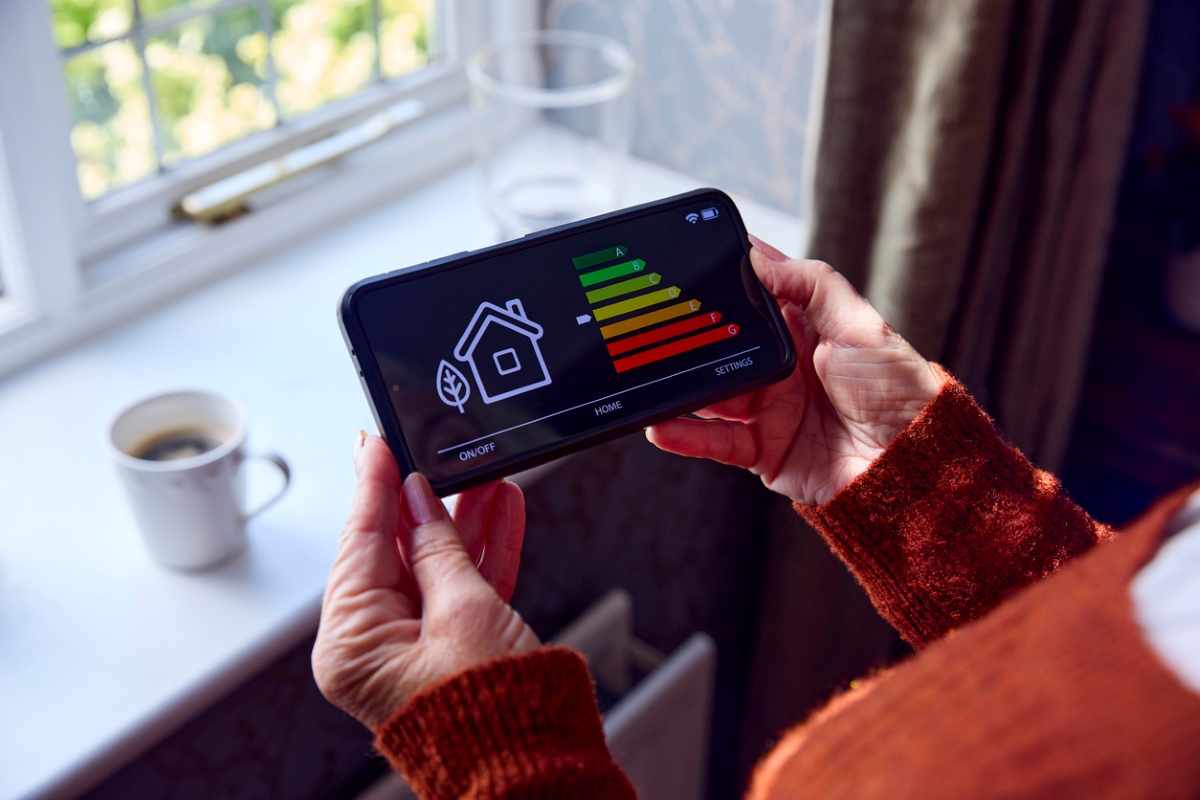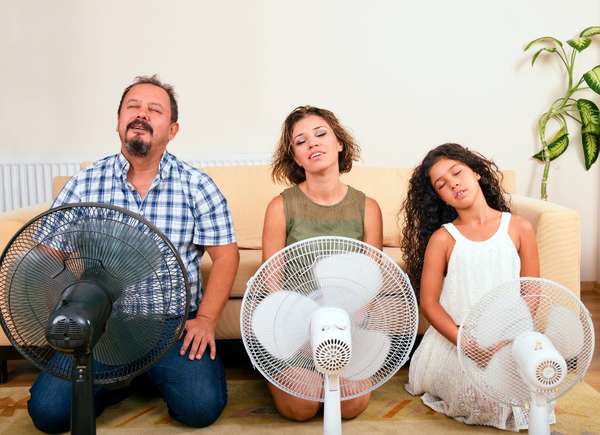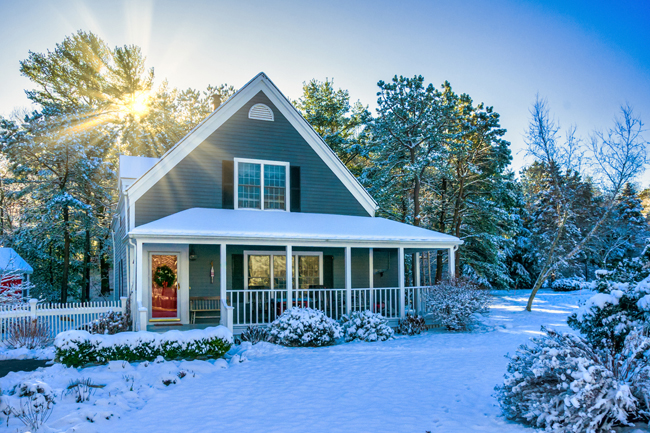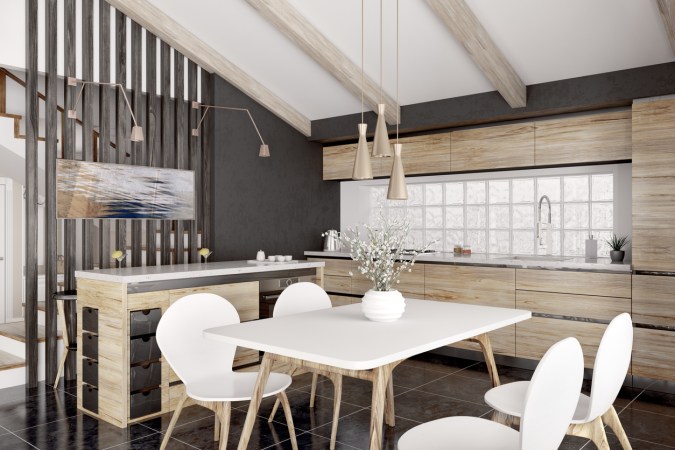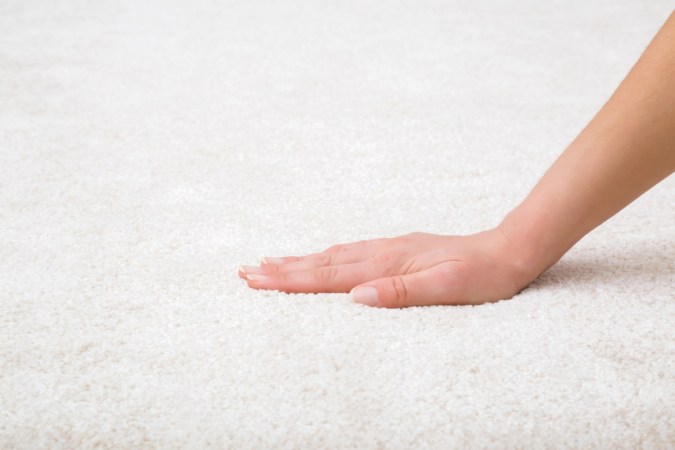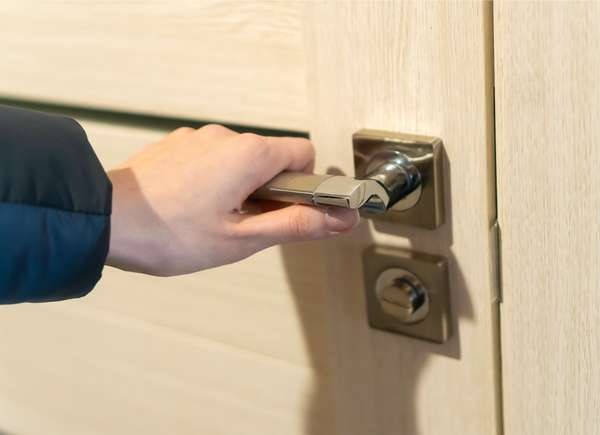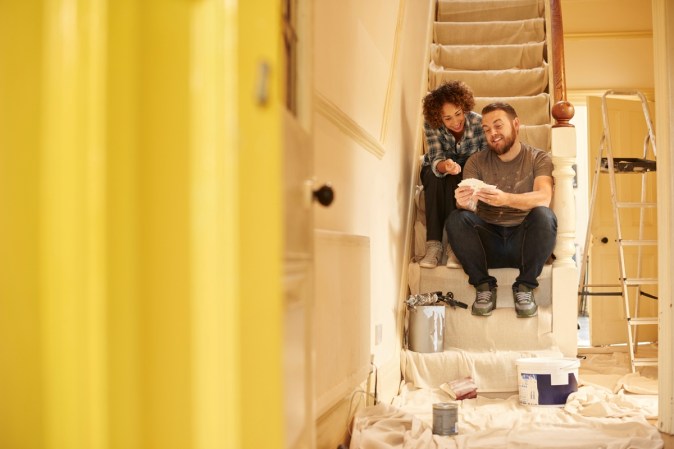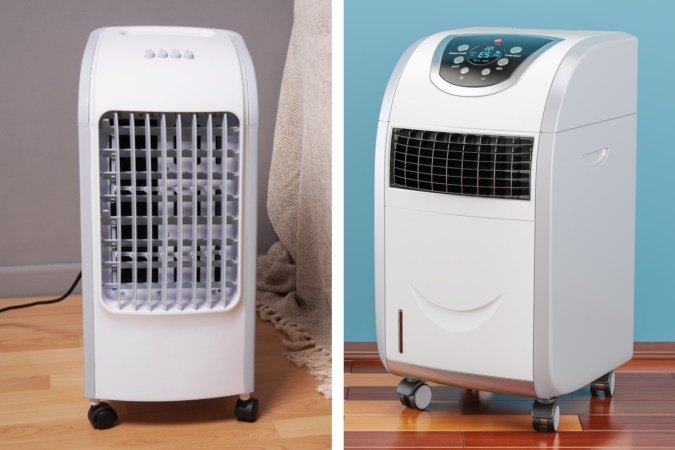We may earn revenue from the products available on this page and participate in affiliate programs. Learn More ›
Although many modern homes are equipped with air conditioning, and it may be your go-to solution for keeping the house cool on a hot summer day, AC may not always be an option. Those who are in the midst of a power outage, have an air conditioner that’s on the fritz, looking to save money (an AC unit can increase your electric bill by more than 40 percent!), or simply want to reduce their household’s carbon footprint can still find ways to keep cool by following these .
1. Install a ceiling fan.
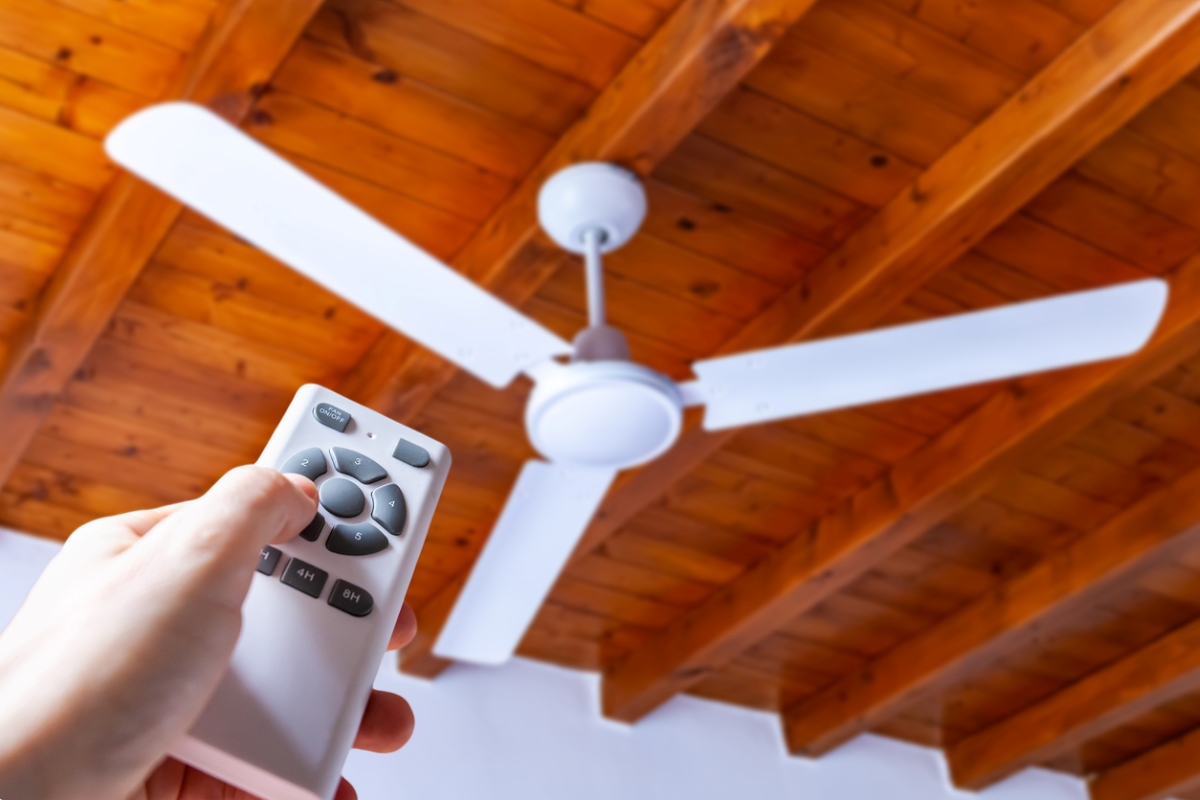
Ceiling fans can be your best friends come summer. Make sure they are set to run in a counter-clockwise direction, which draws cooler air up from the floor. At night, position a box fan in an open window to pull in cooler air from the outdoors.
RELATED: Buyer’s Guide: The Best Ceiling Fans
2. Cook your meals al fresco—or don’t cook at all.
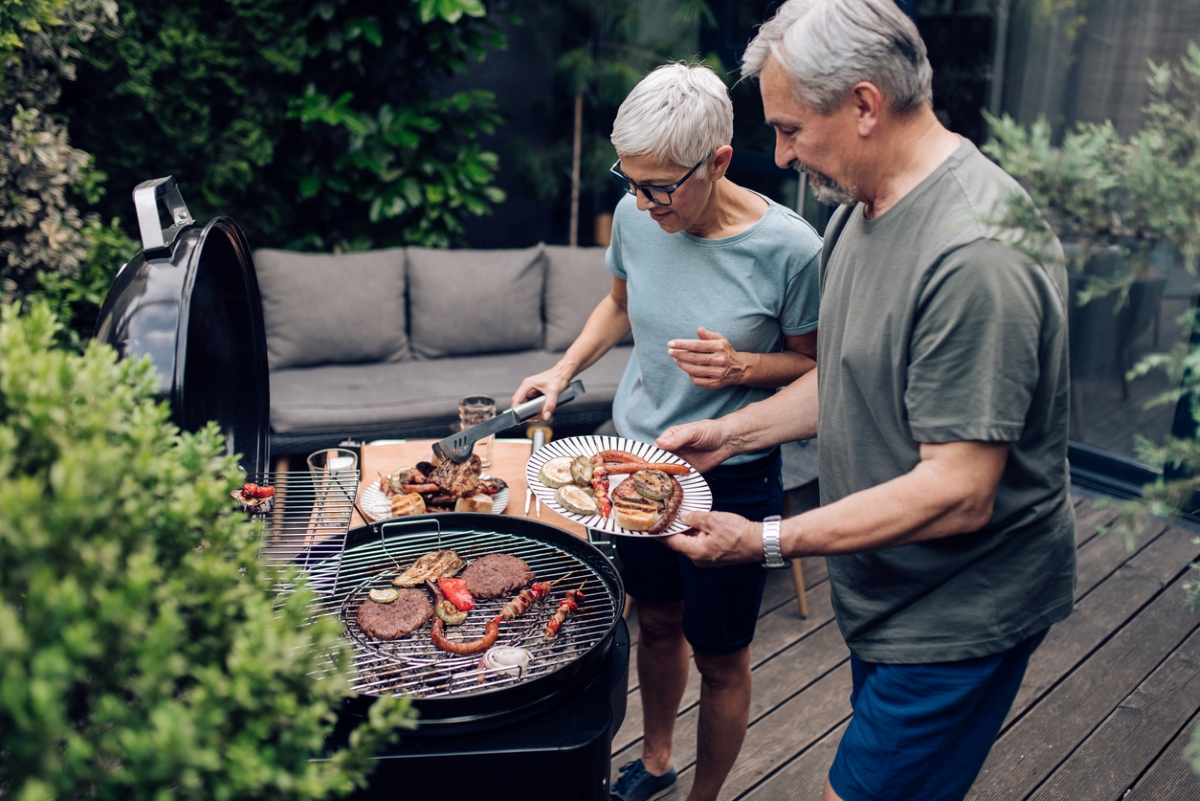
Cooking dinner over a hot oven heats up more than the food and the chef—it warms up the home as well. Keep your house cooler by doing more of your summer cooking on an outdoor grill, or opting for cold salads and sandwiches. If you must use the stove, run the range hood fan to draw the hot air out of the house.
RELATED: Design Ideas to Steal from 10 Amazing Outdoor Kitchens
3. Keep the blinds closed.
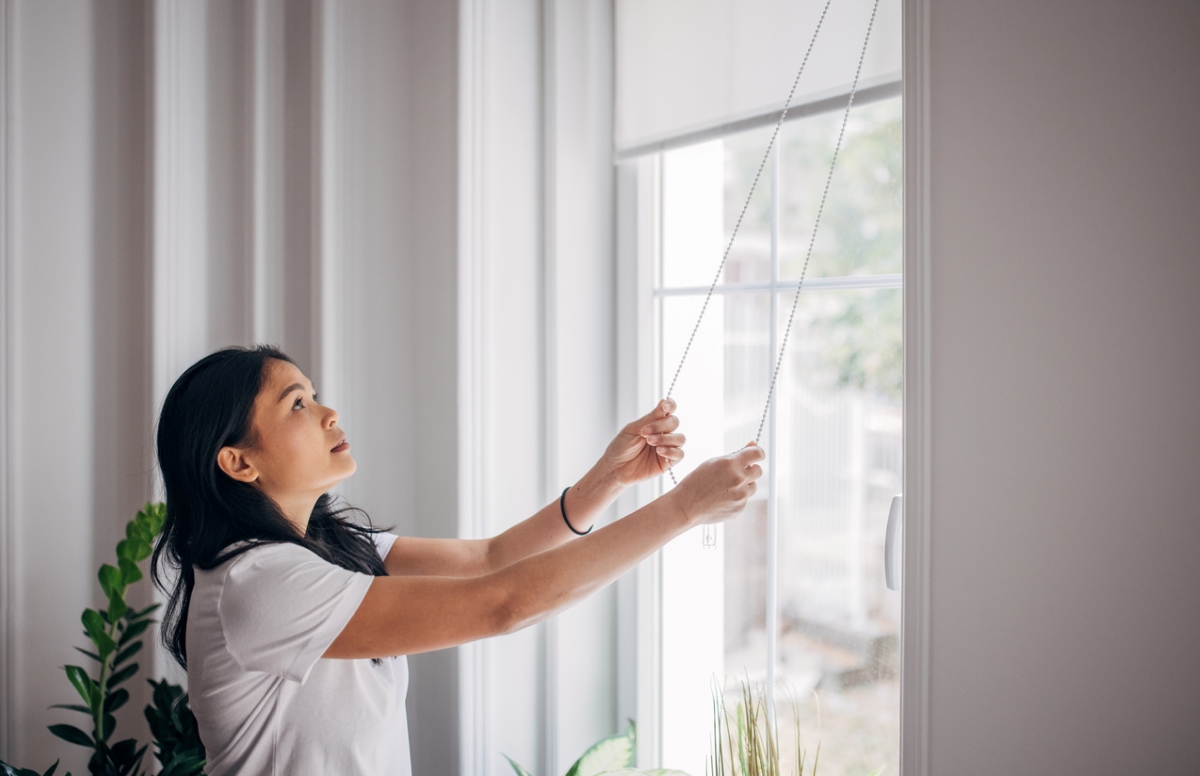
Midday sunlight that pours in through windows and doors can heat up your home in a trice. To keep that from happening, keep curtains and blinds drawn during the daytime to block the rays. When night falls, open the windows to allow cooler nighttime air to enter the house.
RELATED: 10 Classic Ways to Brighten a Dark Room
4. Blow a fan over ice.
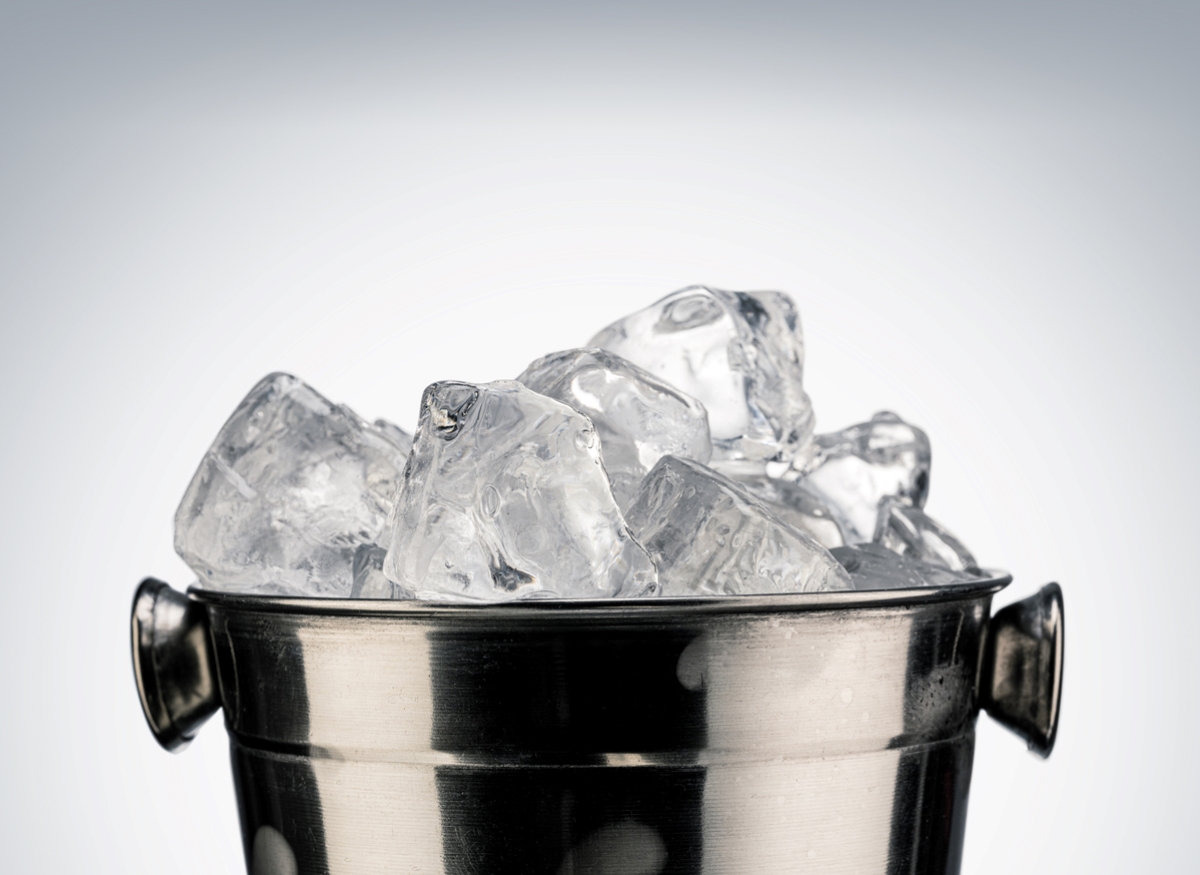
Here’s how to make your floor fan or portable fan keep you extra cool: Fill a metal bowl with ice and position the fan so that it blows over the ice in your direction. If you have the time to construct an even more elaborate setup, try your hand at making a DIY air conditioner out of a 5-gallon bucket.
RELATED: 13 Genius Things to Help You Stay Cool in the Heat This Summer
5. Allow Mother Nature to help block the summer sun.
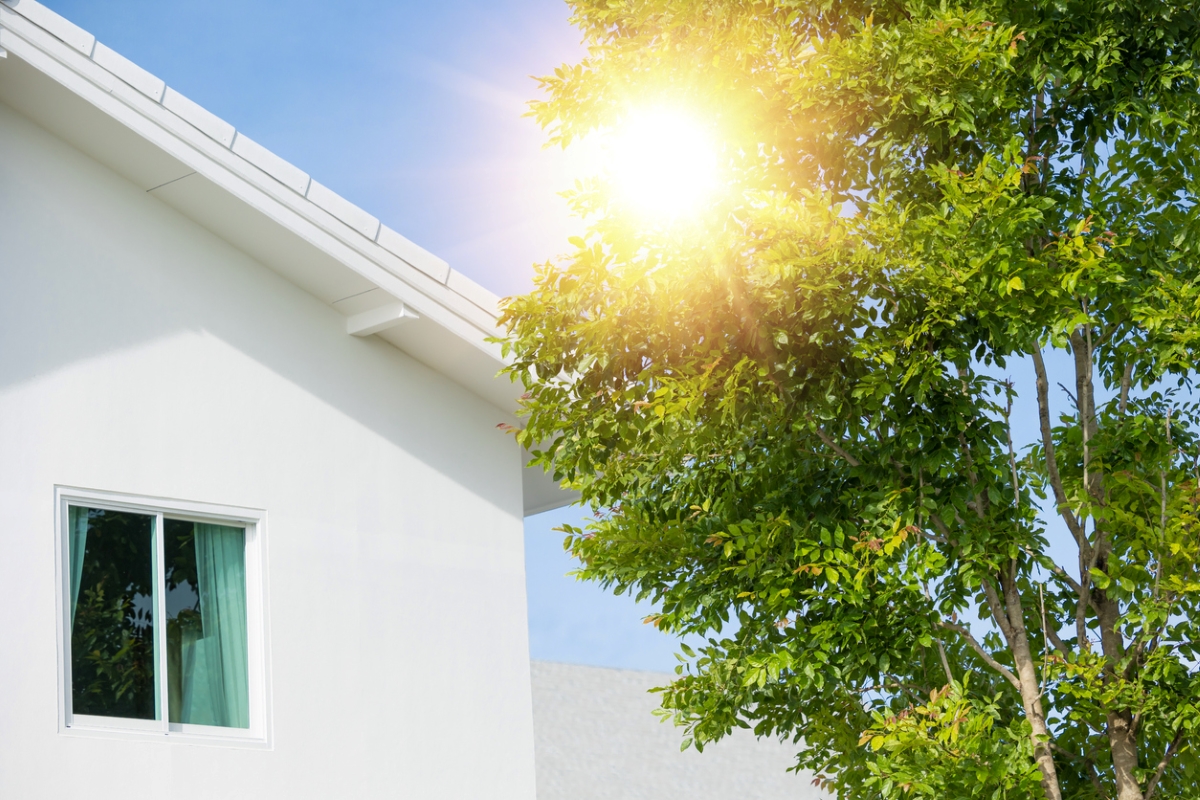
Planting trees close to the house can keep your home cool during the summer. Leafy deciduous trees are great for providing shade in the hottest months, but let in light once their leaves drop in winter. If new plantings aren’t in the cards for you (they’re not a particularly quick solution, after all), consider installing awnings or a shade sail over the sunniest side of the house.
RELATED: 22 Fast-Growing Shade Trees to Plant in the Yard
6. Eliminate unnecessary heat sources.
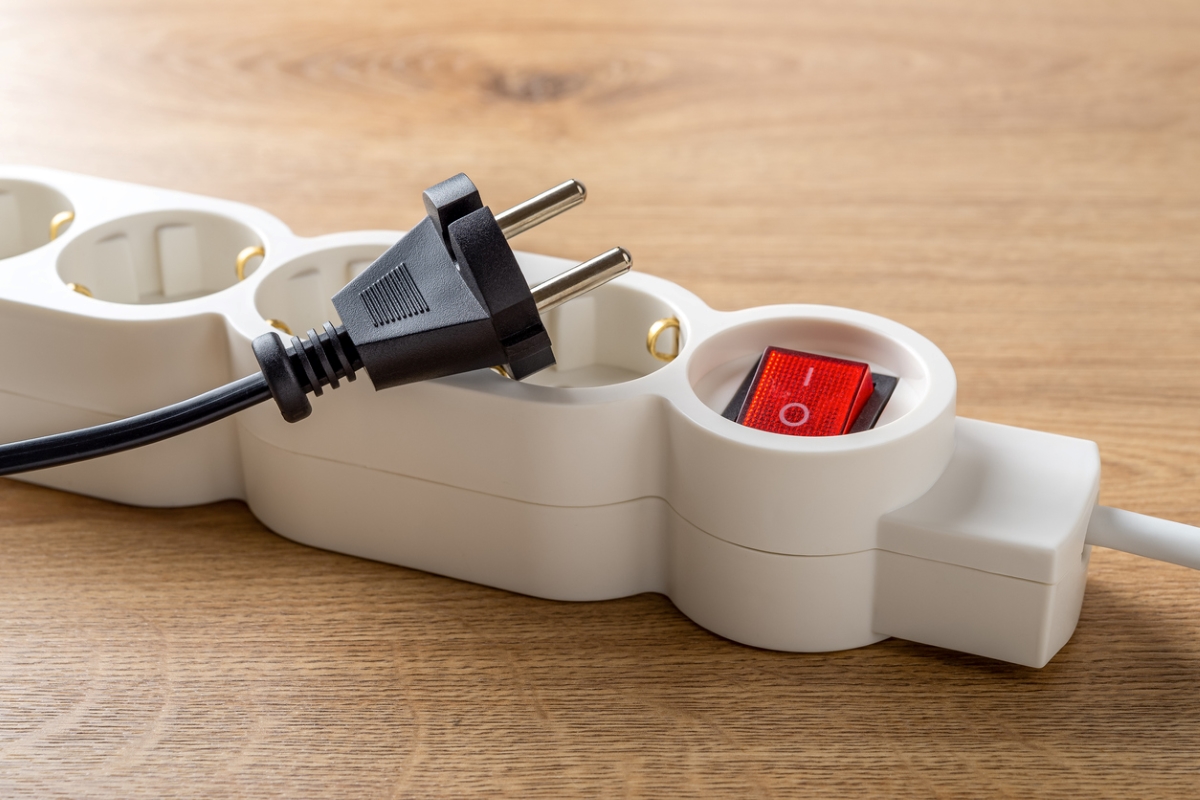
You can do without some of the heat-producing equipment in your household. Unplug power strips, appliances, and phone chargers when they’re not in use because they can draw additional heat into the home through electrical sockets. Replace incandescent light bulbs with cooler and more efficient CFL or LED light bulbs. If you normally park the car in the garage, leave it outside in the driveway for an hour or two until the engine cools off.
RELATED: 14 Secrets of People With Low Energy Bills
7. Add a screen door.
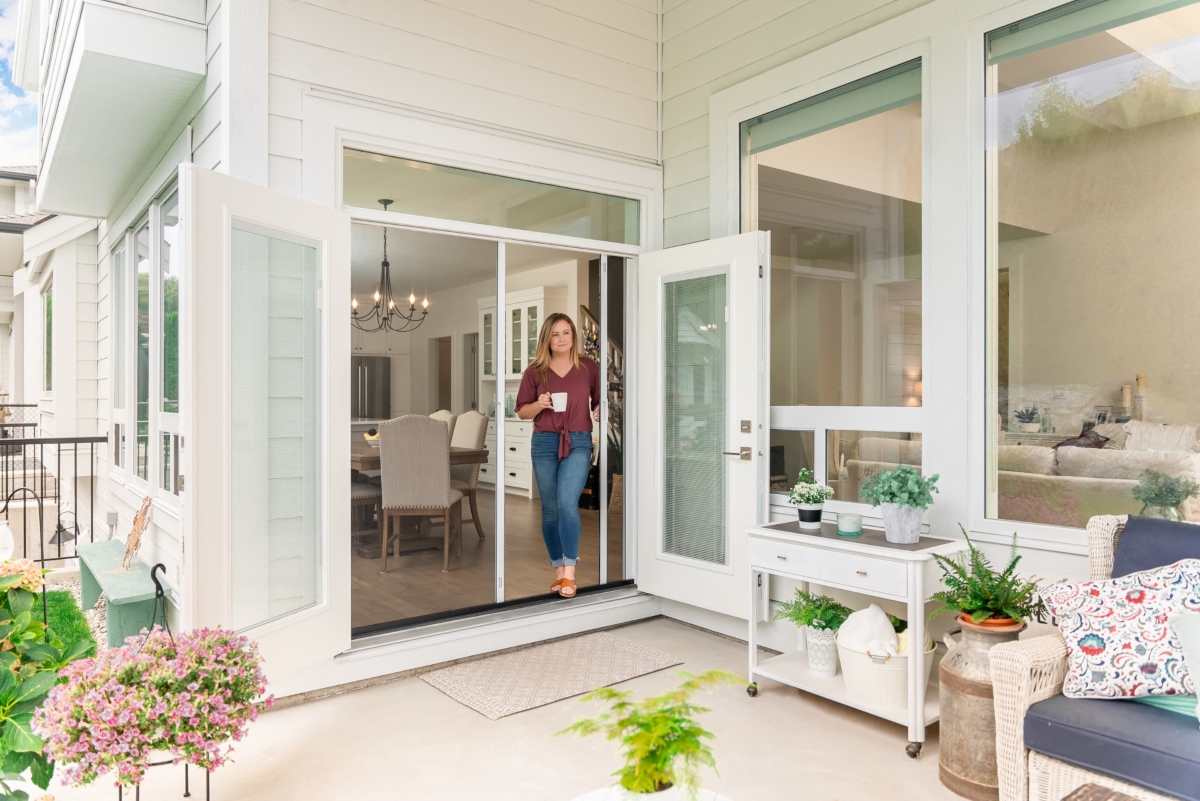
If there’s anything worse than a hot house, it’s a hot and stuffy house. Consider installing a screen door over the front or rear entry doors. Open your door in the early morning and after dusk when the weather is coolest to allow fresh air into your home.
RELATED: Buyer’s Guide: The Best Magnetic Screen Doors We Tested This Year
8. Block out the sun with window film.
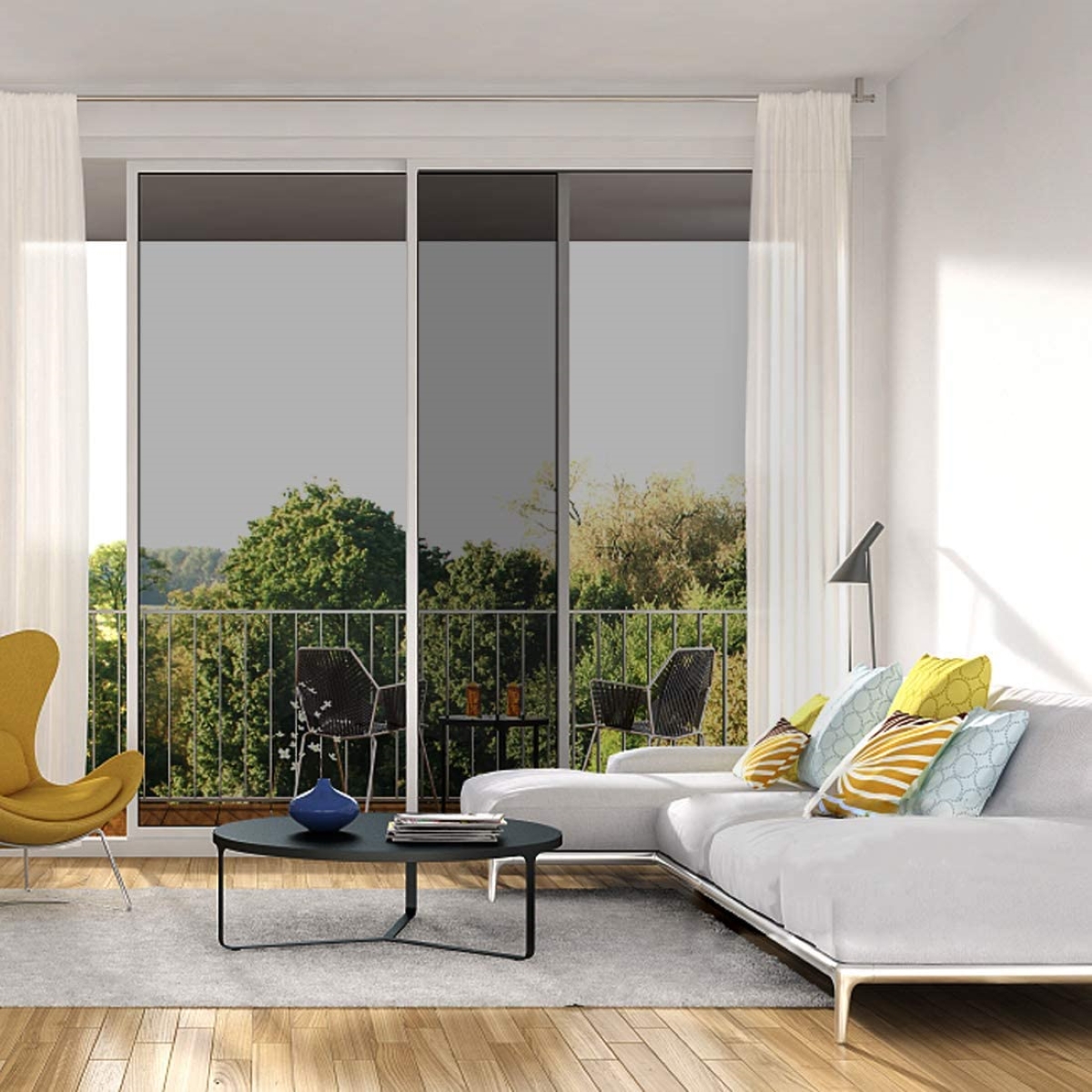
Just as we said when we mentioned curtains and blinds, one way to reduce your home’s interior temperature is to minimize how much sunlight gets into your home. In addition to closing your window treatments, another way to keep rays from heating your interior is to install heat-blocking window film, like WPCTEV’s privacy window film. The film adheres to your window panes and blocks infrared rays and UV rays, reducing the amount of heat that gets in through the windows. (Bonus: Its mirror-like finish allows you to see out, but peepers can’t see in.)
Heat-blocking film has the added benefit of keeping heat indoors in the wintertime. And, since it attaches to your window using static rather than an adhesive, it’s easy to put on and take off.
9. Open interior doors and windows to increase airflow.
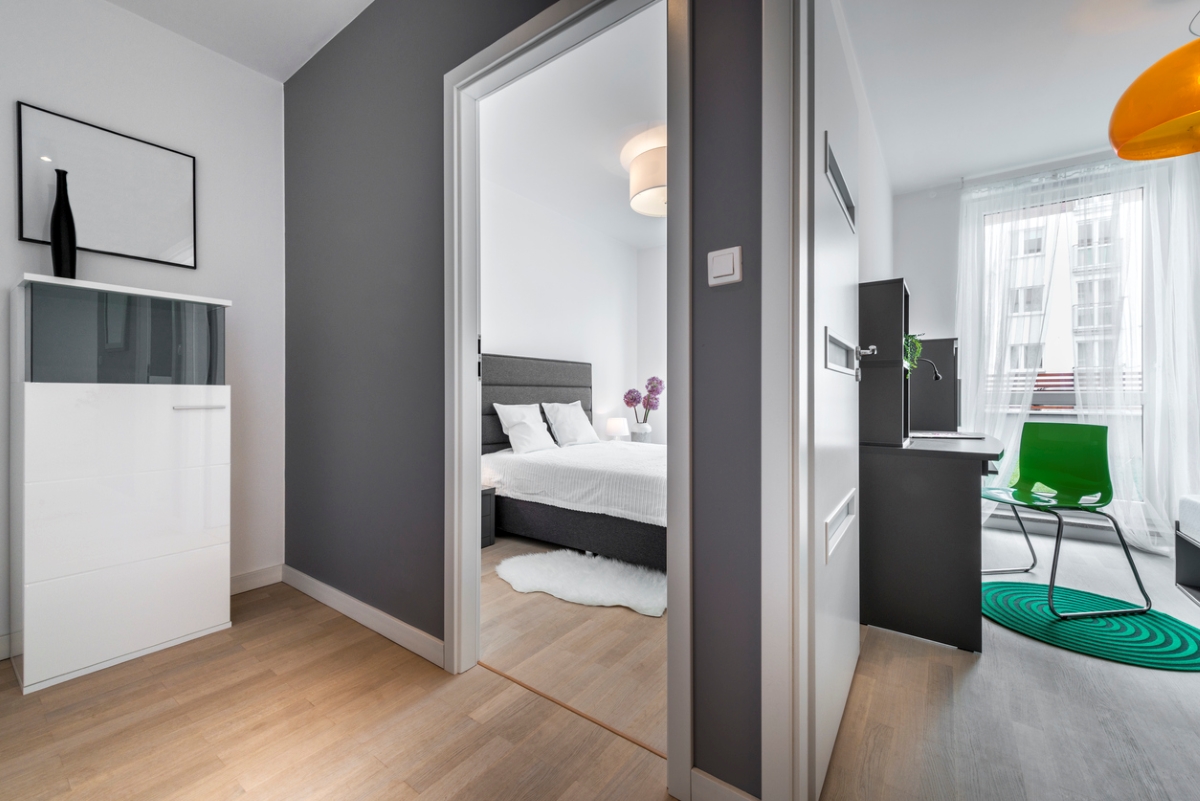
Keeping the interior doors open promotes air circulation throughout your home, which helps to eliminate hot spots. At night, open windows in your house to take advantage of the cooler temperatures. If it’s safe and feasible, open multiple windows on opposite sides of the room (or house) to create cross ventilation that allows air to circulate through the home.
10. Wash and dry your clothes at night.
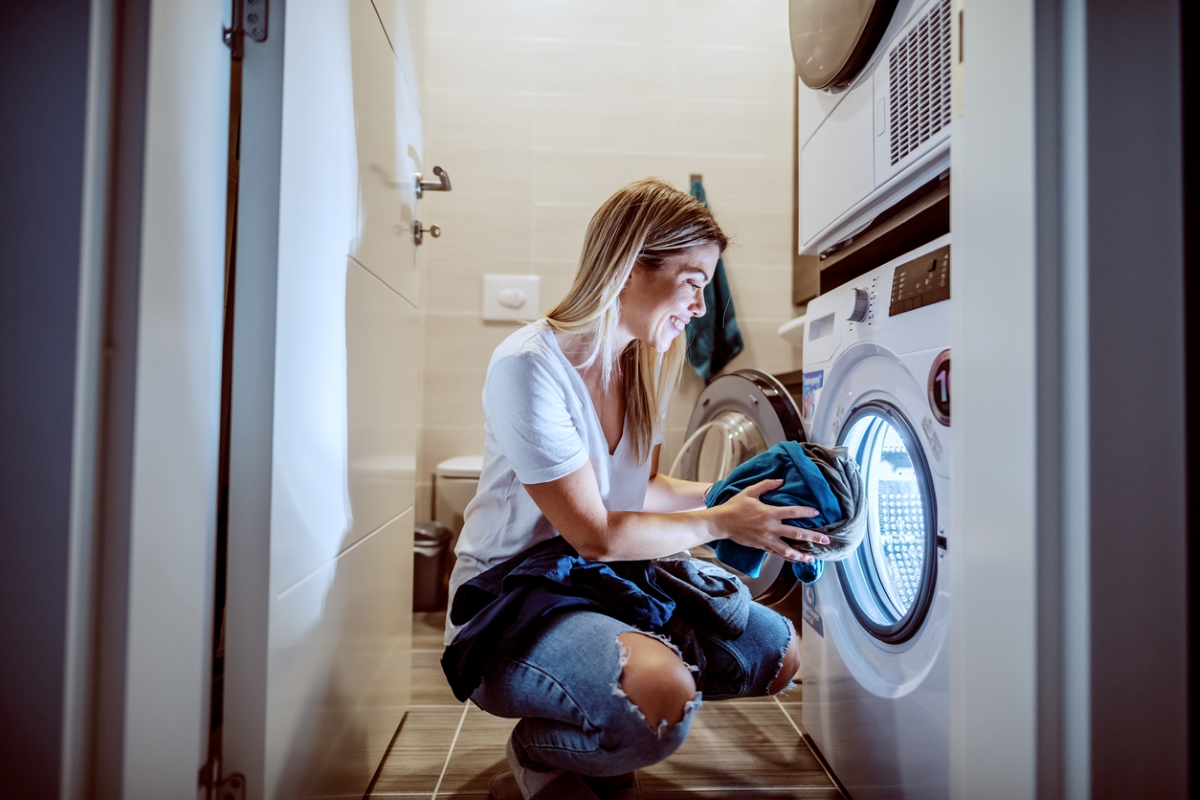
The oven isn’t the only appliance in your home that can raise the temperature indoors: Clothes dryers release some of the heat they generate to dry clothes into the house, and a dishwasher’s cycles run at temperatures between 120 and 155 degrees, contributing heat to a home. Dryer’s heat to around 130 degree Fahrenheit and use around 3 kilowatts per hour, which is almost as much as a central air conditioner uses. While you probably can’t avoid using these appliances altogether, try to cut down on the amount of heat they contribute to your home by only running them at night. In some areas, electricity is also cheaper in the off hours!

